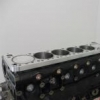Rb34 On Sale
Announcements
-
Similar Content
-
Latest Posts
-
KYBs are typically twin tube, putting them in the lower tier of desireability. Do you just want to replace worn out ones for the lowest cost? I mean, you wouldn't just replace one end of a car, if the rears are a similar age to the fronts, then they are probably nowhere near what they should be, and likely won't be great against brand new fronts. So, to spend ~$800 on 2nd tier dampers, when you could get a decent set of MCA coilovers for <$4k.....? As to the strut tops. 1st up, the Sparesbox site specifically tells you that they are not correct for an R33. Beyond that, why do you think you need them?
-
Bringing an old thread back to life Looking to put some new front shocks in the r33Gtst and the KYB still look ok for a road car. Unless there are any other options aroind that price $200 a shock? I’d like to replace the strut tops also, is this the correct KYB no. For the strut top, KSM7124? https://www.sparesbox.com.au/products/kyb-strut-top-mount-ksm7124?srsltid=AfmBOoq-HDru8wSlLnQrhU9gCw_uYdKg8gUQzONY-EQOdnI5iXOWEUjY 341287 appears to be the front KYB shocks part no. thanks all
-
LandCruiser used to get a fluid flush every 12 to 18 months. Only because it was about that often the electric motor on the master for brake assist kept dieing and needing to come off.
-






Recommended Posts
Create an account or sign in to comment
You need to be a member in order to leave a comment
Create an account
Sign up for a new account in our community. It's easy!
Register a new accountSign in
Already have an account? Sign in here.
Sign In Now